How to Tame Prey Drive in Dogs (8 Expert Tips & Guide)

Updated on
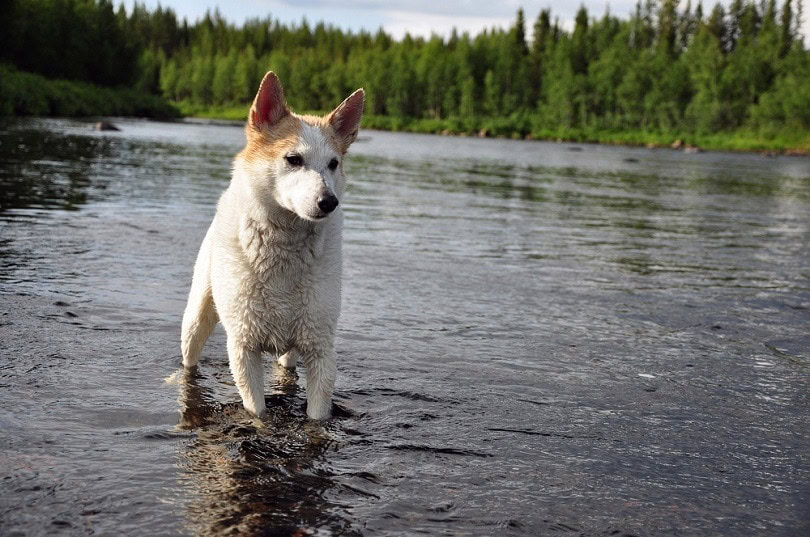
Domestication works wonders for creating well-rounded household dogs that make us laugh every day. However, some of their wild roots still take over in ways that are just instinctual for them. Some breeds are more prone than others to have high prey drive. If you have smaller pets or live in a neighborhood that does? Prey drive can be quite a concern.
Is there any natural way to curb a prey drive in dogs? The good news is , there is a lot you can do to teach them good behaviors. Some dogs might never have the capability to lose their prey drive completely, but it can be reduced and controlled in some cases.
What is Prey Drive?
Prey drive is an instinct for a dog to chase, stalk, or catch smaller animals. It might be something as small as a bird or as large as a deer on the tree line of your backyard. Sudden, spastic movements can trigger an instinctual reaction in dogs.
If you have smaller pets, livestock, I live in an area where other people have animals we need to make sure that your dog is in a potential threat. Positively directing prey drive can be a challenge, but it isn’t an impossibility in most cases.

Signs of Prey Drive in Dogs
- Body language—physical signs such as body stiffening, unbreakable eye contact, and shaking with anticipation are signs that your dog spots prey.
- Vocal reactions—initially, your dog may let out a very low growl or roar combination with body language signs. This may or may not be accompanied by barking.
- Poor behavior on the leash—more apparent signs might be extreme tugging on the leash to try to get to the prey in question. This can also cause issues with disobedience when you call out the command.
- Stalking—dogs are natural predators. They present stalking behavior much like Wolves do in the wild when they have something in their sights that they want to catch.
- Chasing—anytime your dog is off the leash or in the backyard, you might see them running towards a bird on the ground or chasing a squirrel up a tree. Chasing is an obvious indicator that your dog is in predator mode.
- Long eye-contact
Thankfully, there are ways to curb or eliminate this behavior.
The 8 Ways to Train Prey Drive in Dogs
1. Train Young (if You Can)
According to VCA hospital, puppies are trainable by seven weeks of age. Most formal training is typically most effective around the six-month marker. Puppies have improved slightly on attention span and are soaking in everything around them. But the earlier you start, the better.
So, if you’re lucky enough to raise your dog from puppyhood, you have an excellent start for prey drive deflection. Early socialization to many pets in various situations is a terrific beginning, even before instincts fully kick in.
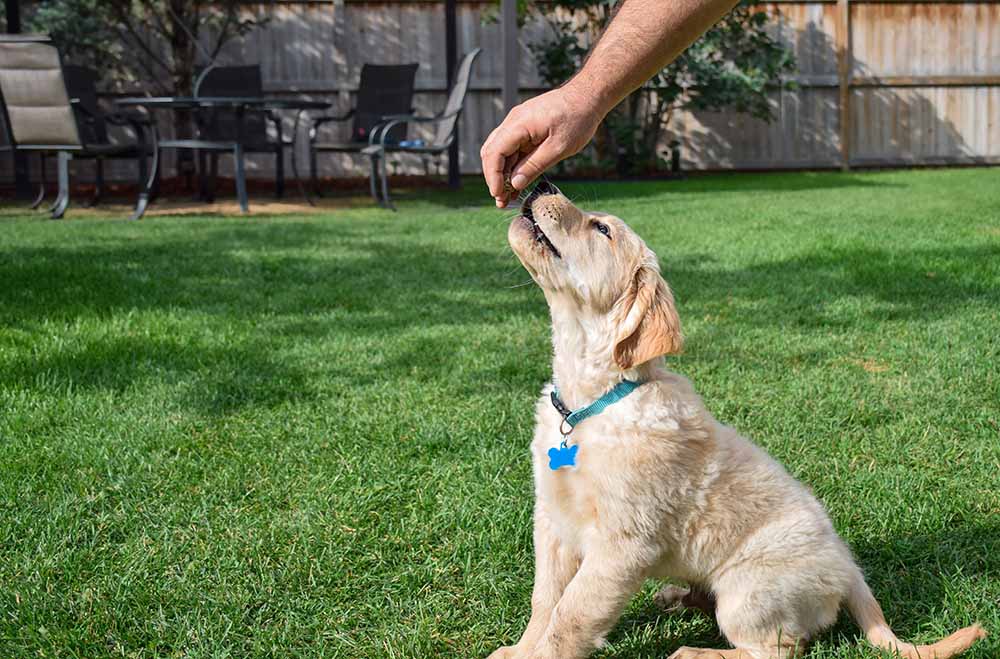
Prey Drive in Older Dogs
Some prey drive tendencies don’t show up until the puppy begins to mature a bit. Retraining an adult dog can be very complicated. The old saying, “You can’t teach a dog new tricks,” didn’t come out of nowhere. But that doesn’t mean it’s impossible either.
It greatly depends on how advanced the prey drive is—and how deeply ingrained the behavior is in their psyche. If you feel that the problem is too far advanced for your skill level, consult a professional to get tips or schedule training classes to increase your risk of success.
2. Channel Your Dogs Energy Appropriately
Young dogs and puppies need lots and lots of exercise. Even if you have a lazier breed, they still benefit greatly from physical exertion. If a puppy or dog has a lot of pent-up energy, it can create behavioral problems that lead to serious issues.
- Give them a variety of toys
- Practice long games of fetch and retrieval
- Romp around with your dog before walks
- Practice agility exercises
3. Pay Attention to Triggers and Timelines
If you’re on a walk with your dog, pay close attention to how close they become to what they consider pray before they respond. Knowing where the lines are drawn can help you to focus your dog’s attention elsewhere when needed.
If you need to record a log, you can better understand and monitor your dogs behavior. When it comes time for training, having a substantial understanding of these issues can help you develop a regimen specifically for your pooch.
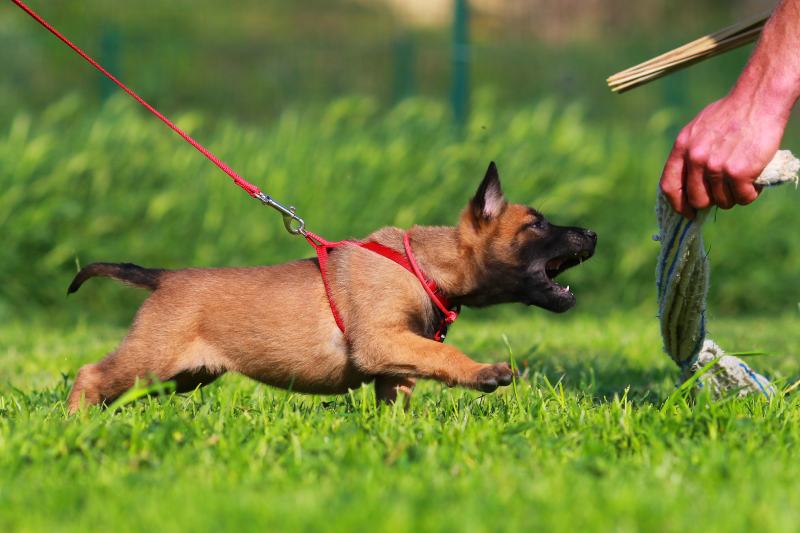
4. Practice Impulse Control Games
Impulse control games can be an extremely beneficial way to stimulate your dog mentality while teaching them appropriate behavior. Often you can use their favorite toys or delicious treats to help them learn restraint.
For your dog to get the treat, make them learn to wait until you permit them to eat it. The more you practice, the longer you can have your dog wait in between. This tactic will allow them to develop impulse control.
5. Teach Commands
It’s no secret that our canines look to us for guidance. They desperately want to please their owners, understanding that we are the alphas. Once your dog knows their place in the pack, it’s crucial to teach commands that they respond to.
“Leave it” is a simple but effective term that many trainers recommend to teach your dog. Once they understand the concept of not paying anything any mind on your command, you will have much more control of the situation.
Of course, you can choose another word of your choice but make sure that you’re consistent each time you give them the cue.
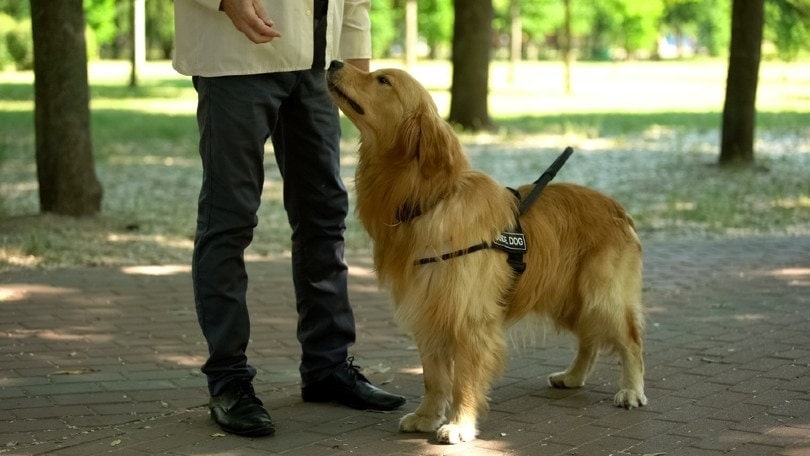
6. Use Appropriate Restraints on Walks
Many dogs won’t walk gracefully on a leash if they have a high prey drive. Until they learn the proper training and control, they might be pulling you all over town and trying to escape at every turn. Dogs are incredibly resourceful, being able to slip out of specific devices.
Harnesses are not only better for your dog’s neck, but they also provide D-ring attachments to help your dog learn how to be mannerly on walks.
- Choose a harness with a control handle. Control handles lie on top of the back of the harness. This feature gives you complete control to be able to grab ahold and restrain your dog when needed.
- Never use retractable leashes. Retractable leashes give ill-mannered dogs way too much freedom. They also tend to be very thin and easily breakable. You don’t want to give your dog the illusion that they can run wild on walks.
- Choose a short leash that you can keep close to your body. Thick, durable, short leashes will help you maintain control by keeping the dog close to your body. That way, if you have to intervene, you don’t have to continuously pull back the leash to get a handle on your pooch.
- Muzzle when needed. If safety is an issue, you can find nonrestrictive muscles that allow your dog to eat, drink, and breathe appropriately while not allowing them to open their mouth fully.
7. Don’t Leave Your Dog Unattended
Even if you have a fenced-in backyard where you think your dog can get out, don’t leave them alone altogether. Constantly monitor your dog when they’re not on a lead and left to their own devices. Dogs will astound you at how effortlessly they can jump fences, dig holes, and chase.
Even the most secure enclosures won’t be able to hold a dog whose drive is higher than their restrictions. If they escape a pen, this can pose extreme risks to neighborhood animals as well as your dog.
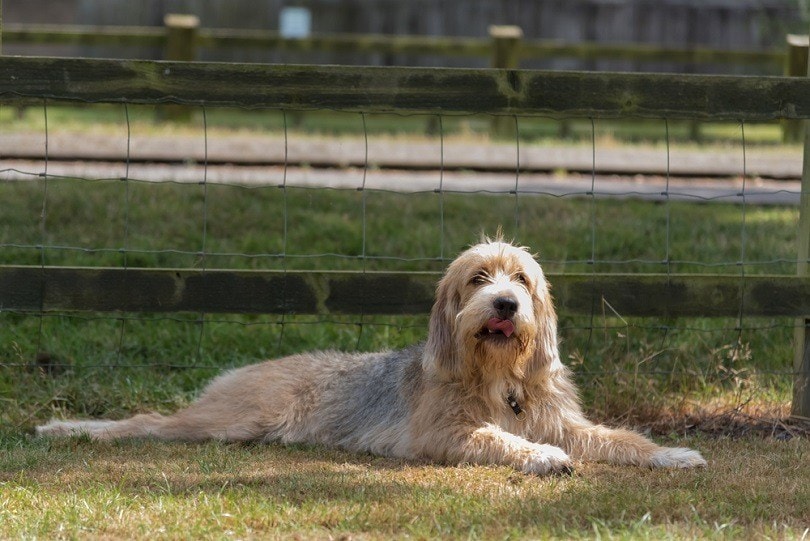
8. Professional Training
When in doubt, nothing screams a solution like seeking professional help. Many trainers are more than well versed in dealing with prey drive and dogs. It is one of the most common behaviors owners seek to change when they look for a trainer to help them.
As owners, sometimes we aren’t prepared for the challenges that come with owning certain dogs. But it is our responsibility to make sure that we keep our dogs and others safe. There is no better way to do that than to rely on individuals who have undergone extensive training and dog behavior.
Search locally for recommendations on the best trainers in your area.
Why Dog Breed Matters Sometimes
For generations, many breeds were developed to hunt. Because this instinct is still embedded in their DNA, it’s tough to teach them otherwise.
They might learn to get along with the house or cat, but that doesn’t mean the sentiment will extend to the animals outside of the home. If you have a dog that won’t break this habit, you’ll have to take other precautions to protect other animals.
Before you buy a dog, it’s essential to consider the natural lineage of the breed. Certain behaviors pass through bloodlines, making many breeds more susceptible to exhibit these behaviors than others.
High Prey Drive Dog Breeds
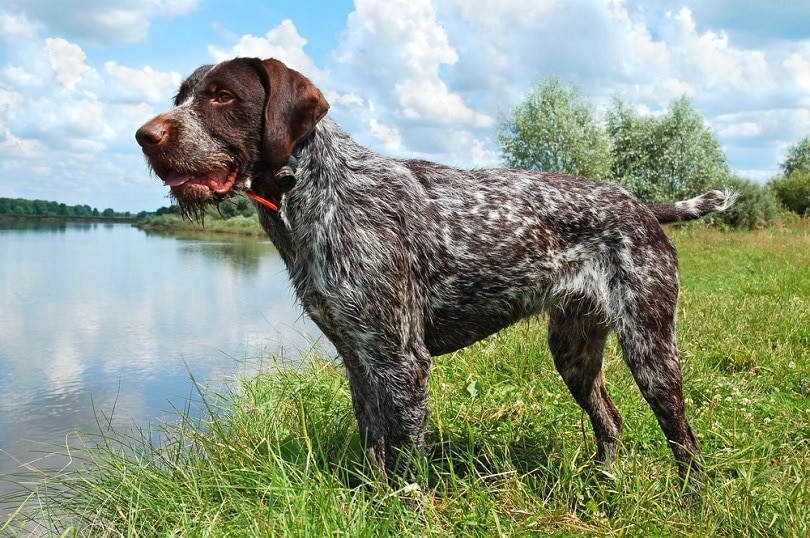
- Related Read: 16 Dog Breeds With Low Prey Drives (with Pictures)
Why Can Prey Drive Be Dangerous
Prey drive can pose risks to both other animals as well as your own dog.
Prey Drive Can Endanger Other Animals
If your dog is not aware of how to calm themselves in a free drive situation, this can put animals around them at risk. If your dog displays any indication that they have prey drive, it is your responsibility as a pet owner to protect less capable animals from being harmed in the process.
Dogs have incredibly powerful bite force. If they get a hold of a barnyard chicken, squirrel, or a cat, one bite and shake could end their life ultimately.
Prey Drive Can Harm Your Dog
When a dog has its sights set, it’s hard to divert its attention sometimes. If your dog gets away from you, it could lead to an entirely new realm of dangerous possibilities.
Your dog could run away, get hit by a car, and several other unfortunate things. Prey drive can cause dogs to dig or jump over fences if they are adequately secured. If they chase unexpectedly on a walk, they could get away from you before you realized it.
Prey Drive Can Put Children at Risk
With certain dogs, they might see very small children as prey. Toddlers and small children are sometimes very frantic and their body language and vocalizations.
This behavior can mimic what your dog considers prey. All children and dog interactions require supervision by a capable adult willing to intervene if the situation merits.
Aggression vs Prey Drive

Sometimes, owners might think that their dog has a prey drive problem when it’s actually fear aggression. Prey drive is an instinctual response to outside stimuli. Fear aggression is a response do to your dog feeling like there are potential threats around them. If they are afraid, they are likely to attack to defend themselves out of necessity.
Understanding this distinction is crucial so you can get to the root of the issue.
How to Protect Your Household Members
Even the best of situations require attention. Even if you don’t think your dog would ever actually intentionally hurt your cat or smaller pets, sometimes when they’re excited, even play can go wrong. If you have house cats, make sure to have lots of purchase and places for your cat to hide. They need to be able to escape from the situation if it merits.
Extra Tips on Dog Prey Drive
Always keep commands simple. Using long sentences or yelling out a bunch of words will only confuse your dog. Remember, they don’t speak your language, but they can relate specific actions to command words.
Repetition is your friend. The more you work with your dog, the better they will be able to curb this desire. It might seem tedious at first, but the payoff is well worth the effort.
Final Thoughts: Prey Drive in Dogs
When you bring your dog home, you are making a moral decision to care for that animal. Before you ever commit, it’s best to understand any potential risks for prey drive associated with the breed. If you’re buying a dog from a shelter that is fully grown, meet and greets are especially important.
With these tips, you can curb or eliminate the prey drive, but you will sometimes need professional help. Many trainers are more than equipped to deal with even intense prey drive. For your dog’s safety and those around them, make the best decisions possible to protect all those involved.
Featured Image Credit: Northsweden, Shutterstock














